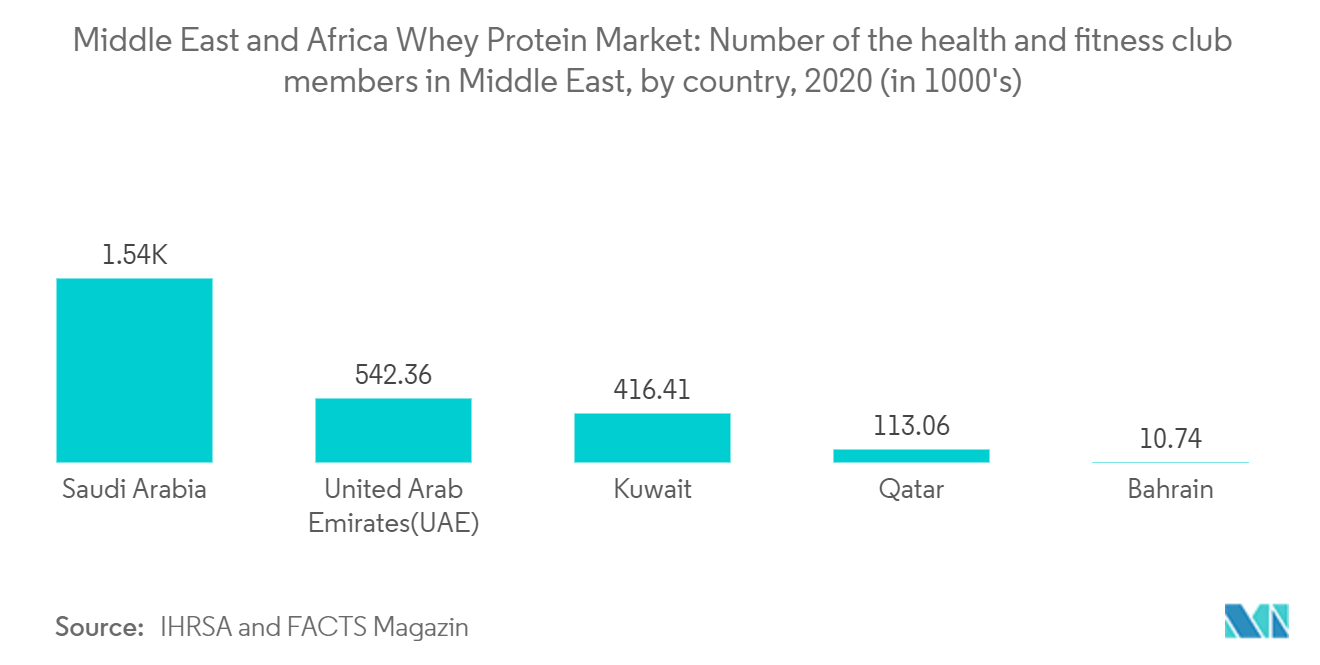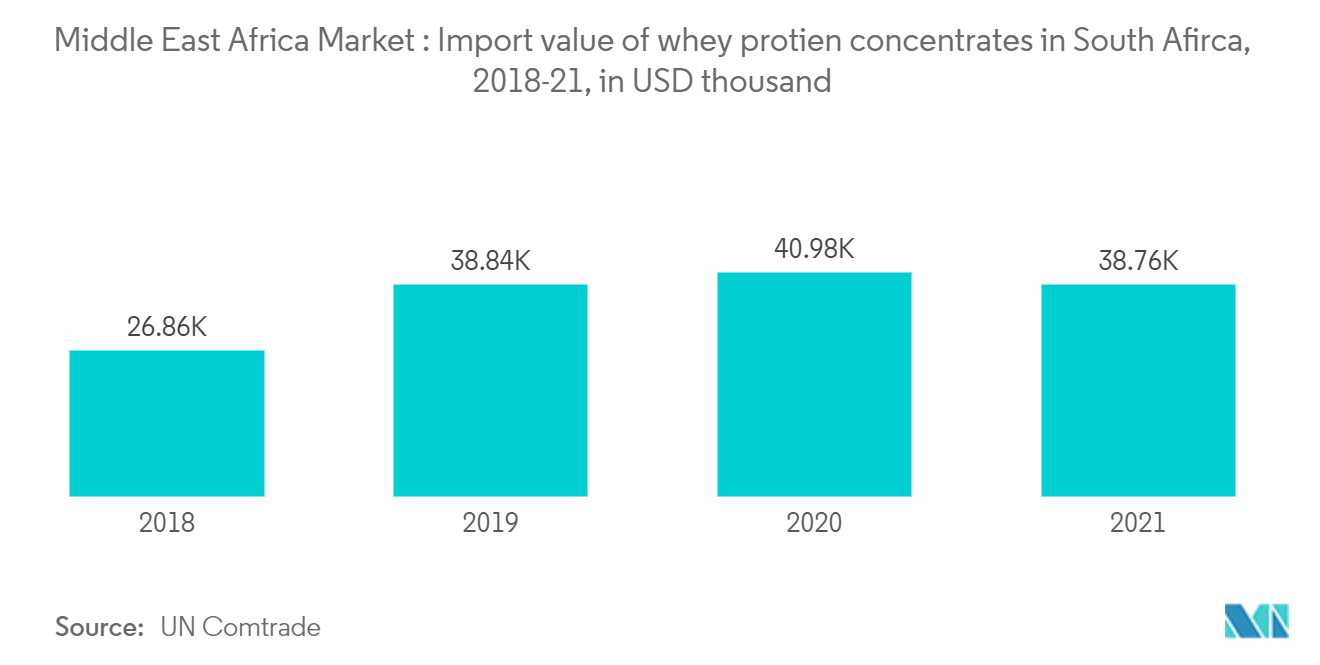Market Trends of Middle East And Africa Whey Protein Industry
Increasing Health and Fitness Club Memberships In The Region
The Middle East and Africa region is flourishing in terms of health and fitness culture, as there has been an increase in the number of memberships around the region. Consumers are willing to spend more on health and fitness clubs with healthy aspects, which is playing a key role in driving market growth across the region. The rising number of health clubs and gyms with personal training and the latest fitness equipment is attracting consumers, which will continue to influence the growth of the whey protein market in upcoming years. The new research, from the travel loyalty program Marriott Bonvoy, found that travelers from the UAE and Saudi Arabia prioritize fitness when they go on vacation, so gyms are increasing in the region. Among all, countries like South Africa, Saudi Arabia, the United Arab Emirates, and Kuwait are expected to surge the demand for whey protein in the region. For instance, according to IHRSA, South Africa had around 2,845 health and fitness club memberships in 2021. South Africa also has gyms fully dedicated to women to encourage women to adapt gym. For instance, Femfit is a gym owned and run by women in the country. The increasing inclination of consumers toward physical fitness and workouts and the strong growth in the number of health clubs and fitness centers are the major factors fostering the growth of the market.
The younger generation, which is more oriented toward living a fit and healthy lifestyle, is becoming more and more enamored with whey protein powder. Also, high-intensity workouts and sports like kickboxing and martial arts are expected to make more people want to buy whey protein powder in the next few years.

Whey Protein Concentrate (WPC) segment is expected to dominate the market
The Whey Protein Concentrate (WPC) segment is expected to dominate the market. WPCs are whey proteins that remain soluble in the whey after casein precipitates at pH 4.6 and 20°C. These concentrates contain lipids, lactose, and minerals and are a heterogeneous mixture of different proteins.
Furthermore, WPC is a low-cost alternative for blending caramel with superior flavor and processability. WPCs are employed in a variety of applications, such as the manufacturing of yogurt, beverages, and dairy desserts. In addition, whey protein has a longer shelf life than other dairy products, allowing it to last for weeks while preserving its characteristic state, thereby driving its applications in bakery and packaged food products. Surging adoption of whey protein in infant food will continue augmenting the growth in the market over the forecast period. Whey protein concentrate contains more than 76% protein and all the essential amino acids required by a growing infant. When concentrated into a high-quality powder, it offers a superior whey protein source for infant formula. The increase in demand from working women for quality protein infant foods and the nutritional requirements of athletes is driving the growth rates. Whey protein concentrate is now being adopted in applications in the food and beverage segment as it is used in the production of cereals, dairy products, and chocolates, among others. The market's growth is escalating as new products are continuously introduced in the market.


